
The Cauvery river. Credit: Ashwin Kumar/Flickr CC BY-SA 2.0.
January 1, 2017.
I have been running. Running hard all these years. Running on tarmac, on dirt, running from others – and even harder from myself. I was afraid it would catch up. It was amorphous. It would come uninvited, settling down like a dark cloud refusing to let the Sun through. I took pride in being fiercely independent and didn’t believe in bothering others. I refused to seek help for a long time. I believed I knew more about it than the doctors I was seeing. The truth is… I am dealing with a mental illness. I have been bipolar for much of my professional life.
While riding these crests and troughs of my mind, I was following streams and rivers, from hills to the plains, in forests and agricultural fields. The meandering course of one particular river, the Cauvery, I would come to know very well. Maybe I chose to work along rivers and streams because, like my mind, they followed a well-defined course, a path: uphill, downhill, always in the valley, always with gravity. Or maybe I thought so.
Depression is like an auto-immune disease of the mind. You are turning inwardly against yourself and, unlike a broken limb or an injury, there are no visible scars or casts for others to see. There is time initially when you doubt anything is wrong and are always seeking your true self, the person you thought you were before it all started. I was to discover much later that there is no true self. I have long resisted the idea of writing about my work along the river because I felt I simply could not dissociate my state of mind from my work.
In many ways, the illness lent my work shape and structure. It made me more sensitive to everything I saw and heard about the river. What I was seeing was what I was witnessing wearing different lenses, that of depression and mania and the in-between.
My story along the Cauvery did not begin on one sunny winter morning. It did not begin with this river at all. Starting 2010, I have ricocheted off many places, people and projects. I was in the Annamalai hills, a landscape of hills and valleys, forests and fragments, coffee and tea. I did not have to go far for there was wilderness all around. It was here that I noticed something amiss. I began having trouble with thoughts. What began as a simple visit to a doctor turned into a series of visits, some worried friends, and a lot of confusion. Refusing to accept that there was something wrong, believing I could fix it myself, not wanting to lean on others were all symptoms of a deep, gnawing disorder.
After a flare-up in my depression and increasingly erratic behaviour, I was shunted out from a landscape that I once knew like the back of my hand. It was here that I had retreated to the land, to the hills, valleys and streams as a poultice for the cuts and bruises. I had spent a couple years working in the Annamalai hills – a place that I loved, working with people I liked and generally sauntering where I felt like.
I had hornbills and elephants for company, and preferred the darkness of the night and the chill of the rain more than the daily routine of chemicals coursing through my veins. I could do with little sleep and there were times when I felt superhuman, senses acute, I could hear, see and follow the trail of an animal I would not have noticed otherwise. While I retreated deeper and deeper into the folds of the land, my relationships with friends, bosses and colleagues steadily worsened to the point where I had to move from the place that I loved.
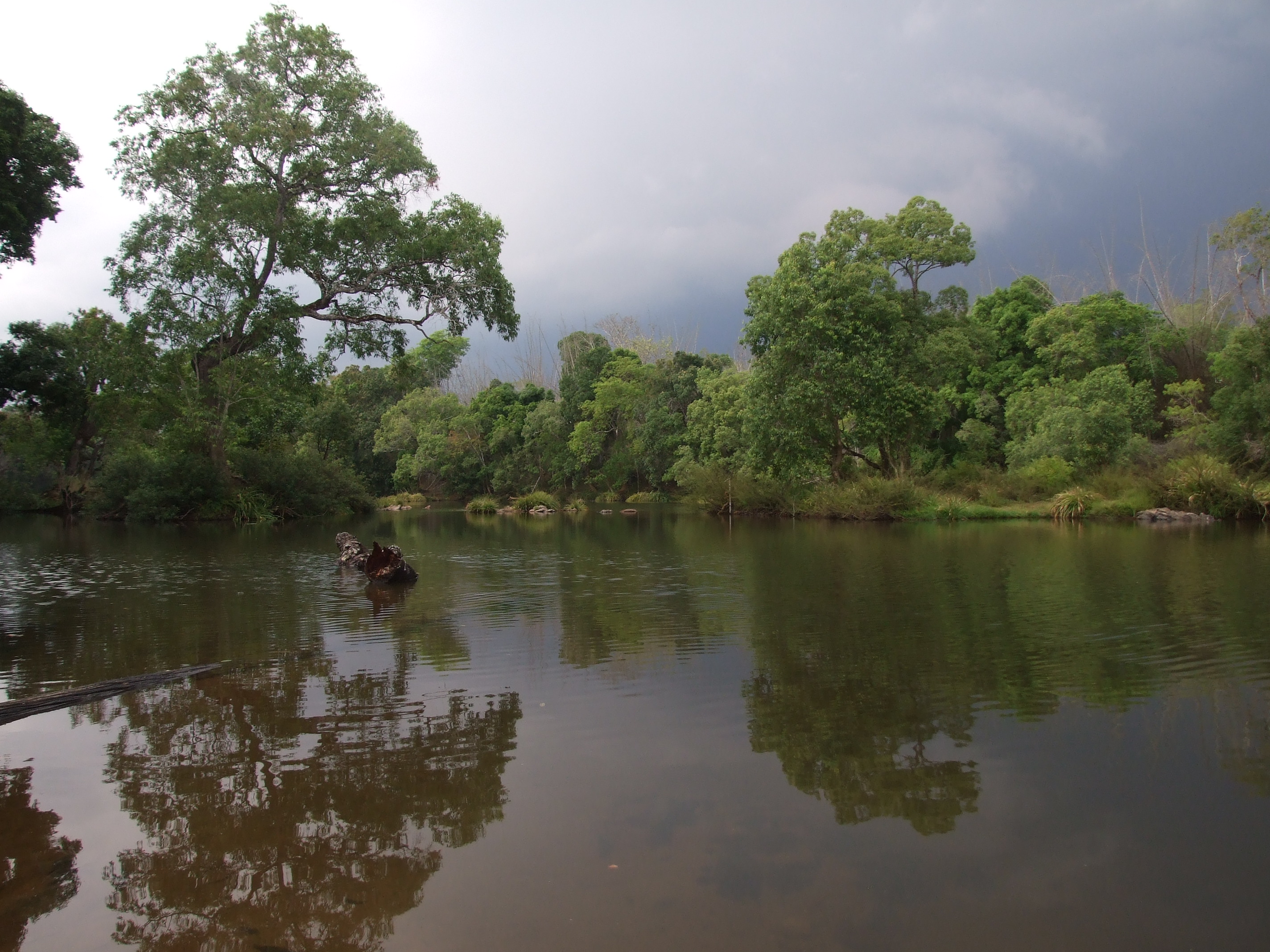
The highs were nothing short of exhilarating, with the burst of ideas and connections clicking and exploding in your mind. Much of my work has happened during these phases. The lows, the dark depression that almost always followed, was crippling. I was consumed by it. Weight loss followed a lack of interest in food and work. I mostly slept through it when I could. Off medicines, even sleep evaded me. I had resorted to alcohol, and overdosed on my medicines to still my mind, until my body surrendered. I also wanted to sleep because I felt I would be a burden on others in this state; feeling like I was dead weight, I had no option but to leave the place I loved.
I thought a short field season of tramping alone in the mountains of Arunachal would help. I was there to speak to communities regarding their attitudes towards an elusive predator of the high mountains: the snow leopard. All I mostly remember is a medicinal drug-induced haze of hopping towns, hitching rides and long walks. This was a thoroughly under-prepared study, as I see it now, and I can only blame myself.
Under the influence of the medication, I was constantly drowsy and, at least on one particular occasion, this worked to my advantage. On a strenuous two-day hike to a village in the mountains, Mago, at over 3,500 m, with a steep ascent through the forest, suffering from having worn new boots and exhaustion, I finally surrendered. I unrolled my sleeping bag, popped my pills and went to sleep. Darkness comes early in India’s northeast and it was a long twelve hours on a narrow trail alone, hoping I would not roll over the edge. The drugs knocked me out for a good portion of the night.
The Cauvery
I have been drawn to waters and otters for reasons unknown. To me, otters represented the river, metaphorically as well as ecologically. I had secured funding for the work I planned on otters: to assess their status and threats to their survival along the stretch of the river Cauvery in Karnataka, about 330 km starting from the source, in the hills of Coorg. This was going to be the start of my journey along the Cauvery.
With the funds secured, I now encountered another problem. From the sparsely populated and wild landscapes of the eastern Himalayas, I was embarking on a journey on foot, by raft, kayak and coracle along one of India’s more heavily populated and politicised rivers. A river that is reduced to a sewer in many places along her course but is still home to otters. The river, I believed, was more than an ecological system to me. It held answers in its meanders, riffles, pools.
There was a sandbank in Coorg, near where I lived, that told a story that my eyes initially failed to see. It was the last surviving sandbank in that part of the river. The others had been carted away. This one was alive. By day it belonged to the neighbourhood mutt. By night, elephants swam over from the forests on the opposite bank to their private beach. Small-clawed otters too left their mark along the water’s edge. Sandbanks are to otters what forest are to elephants.
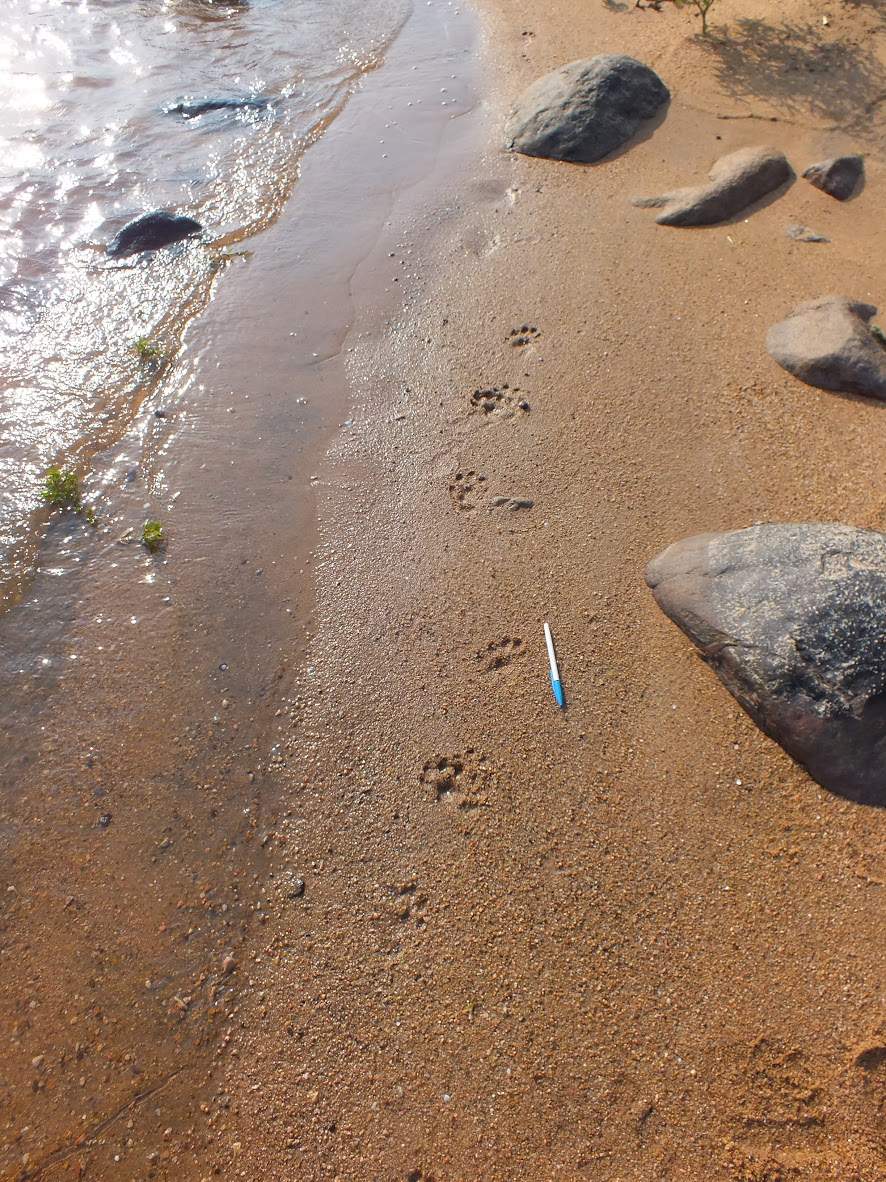
All that would be left next morning were footprints in the sand, like the words in a story. Once, I saw an otter track planted on an elephant footprint. I had come to know this part of the river intimately. Its curves and bends, pools and riffles, its trees, ferns and the rocks were characters in a play that was enacted everyday. I could almost trace our Earth swinging around the Sun by walking on my sandbank. Otters continued to elude me, barring one brief glimpse. Then finally, one of the remotely triggered cameras set up to record otters caught a portrait of one peering into it.
But things would take a drastic turn. All along we had been fighting attempts by locals to mine sand from this last sandbank. We built thorny bamboo blockades on the road leading to the river, dug a deep trench to further fortify it and even planted the road with native trees hoping they would grow to be giants overnight and keep tractors and trucks out. Nothing worked. We would come back from work to see our barrier torn and tire marks everywhere.
Meanwhile, the illness had become a paradox: everything made sense and no sense at the same time. Everything was in black and white, with no shades of grey to soften the edges. There is little doubt that my judgement was somewhat affected during these times. For better or worse, I may never be able to say. Asking for help is exposing your weakness. I wanted to be strong and independent, like I used to be. Experience had also taught me that being open and vulnerable might not be the best bet and most people cannot handle the depth, darkness and morbidity the illness can bring.
Often, gunshots and the duet of the resident pair of Brown Wood owls punctuated the silence of the night. The deep rumble of elephants somewhere on the opposite bank and the alarm calls of spotted deer kept us company. Here was where decay ended and the wild began. Like the ebb and flow of the river, there were good, bad and worse days. Bad days meant staying in bed, too tired to get out and in a hazy stupor. Then, even the river failed to lift my spirits.
Still worse were thoughts that revolved around how I could make the sand robbers pay for the wounds they were inflicting – or how I could easily put a piece of lead in my head without a second thought. The good days had long walks or long waits on overhanging branches watching the mahseer splash, terrapins claim their favourite rock perch and darters drying their wings. There were fish eagles screeching overhead and the odd osprey gliding over pools looking for unsuspecting fish.
The coffee plantations and towns along the course of the river were not kind. They sucked her up and filled her with refuse and toxins. In some places, the only thing going for the river was the thin strip of vegetation along the banks and the fact that she was not blocked by dams in this initial stretch as she flowed out from the hills into the plains. On our way down the Cauvery in Coorg, we had encountered hundreds of sand mining pans, rafts and people digging deeper and deeper till they emptied entire stretches of sand. We saw banks that were carved out by greed and now eroded and collapsing into the river.
The water was murky, the fish stocks depleted. It was not just sand mining that was to blame. All the villages and towns along the Cauvery treated her like a sewer, emptying all their waste hoping the river will flush them down to some distant place. There were others more insidious and invisible. The plantations and fields used highly toxic agrochemicals that without doubt made their way into the river. I say ‘without doubt’ because much of the native riverside vegetation that once stretched along the river and acted as a filter was mostly gone – felled, hacked and grazed into oblivion. Now, there was nothing to stop the spillover from these toxic farms.
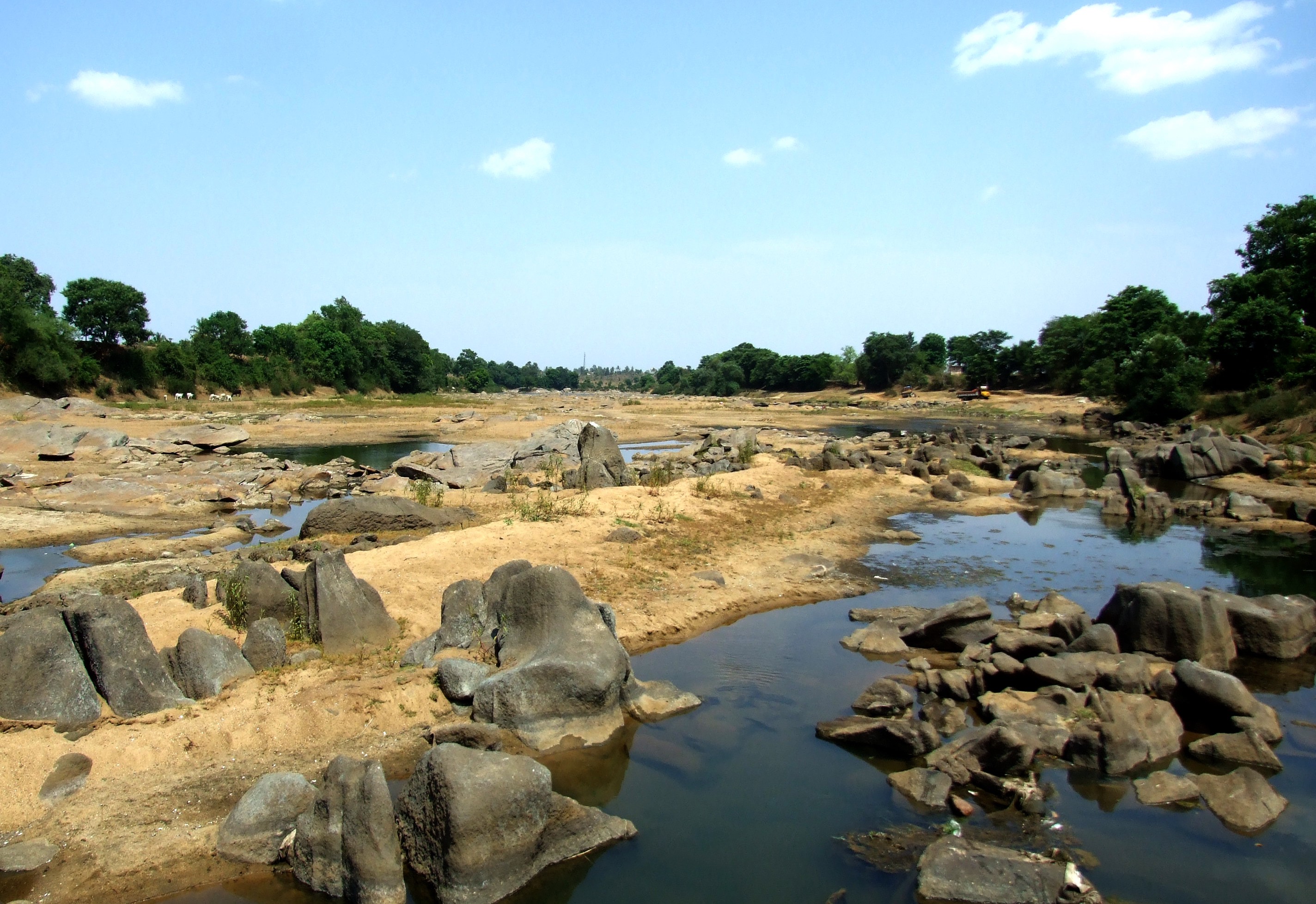
The memory of the river was alive at times, with people when they saw garbage being dumped, plastic choking it, the fish that once swam there still surviving in pockets of calm. They worshipped her in designated spots on designated days, with traditions passed on down the ages. But where she flowed in their backyards or past towns, it was just water flowing from a higher place to a lower. There were some who fought for clean, flowing water. But in most cases, matters of money triumphed over matters of reason and compassion. I was often a mute witness, stuck between trying to record this and knowing the outcome can only push me deeper, and this frequently lead to paralysis and inaction.
I was reacting by blocking access to sand miners and reporting hunters but at the same time I did little to mobilise support for the river, raise awareness and write about it. Then, project deadlines were important for I would be judged by the objectives that I met, data that I collected, analysed and published. And I had my own monkeys to tame.
The monsoon in 2012 had petered out and was to break the river’s spine. Following its course, as I entered the hot and dusty plains of Mysore, the stagnant and dying river was still buzzing with activity. The summer of 2013 was hectic for those who saw sand as money. For the rest, the pools still were a place to play, swim, wash clothes and bathe. There were straws sucking up the pools feeding thirsty crops that had no business growing in a drought-prone landscape. Days were long, mostly consumed by planning logistics, collecting data and keeping everyone fed. The only thing that kept me going were the otters and birds we saw from time to time.
By now, I had discontinued my medication, convincing myself that they were affecting my ability to work. I had always been waiting for an excuse to get off medication. Almost dozing at the wheel counted as one. I could not read anymore, my journal entries became few and far between and I started falling behind in every way possible. It became increasingly hard to keep everyone satisfied. There were confrontations. I was unforgiving with the people around me, things I encountered along the river, and – even more – with myself. It was difficult to accept that sometimes I could not perform at the levels I used to. This significantly dented my confidence to work. I revolted at every possible chance, and while this was aimed at others, it was in some sadistic way pointed inwards, towards myself.
Meanwhile, the river continued to sustain life even as she was being sucked dry. The otters had adapted well, resorting to nocturnal adventures with fishing nets and noontime play when activity along the river was low. The tall grass and other native vegetation were their only refuge. It was strange because, according to the fishermen we interviewed, otters were increasing in population as compared with years earlier. The only possible explanation was the decline in otter-poaching.
Nowhere in the plains did the otters have a favourable reputation as they damaged fishing nets and consumed fish. These fishing nets were expensive for fishermen living on the edge of poverty, along a river where fishing was increasingly dominated by sand mining.
They were being displaced from traditional fishing stretches by the more lucrative and powerful mining operations. The fisheries department did little to ameliorate the decay of inland fisheries and squandered precious funds and subsidies on non-fishers. There was no attempt to protect the rights of fishers from illegal mining and dynamite fishing. Nature’s very own fishers were now pitted against fishermen and many others. Fishermen were asked to kill otters by the fisheries department as a way to protect fisheries. The forest department is almost nonexistent outside protected areas and here, too, it was no different.
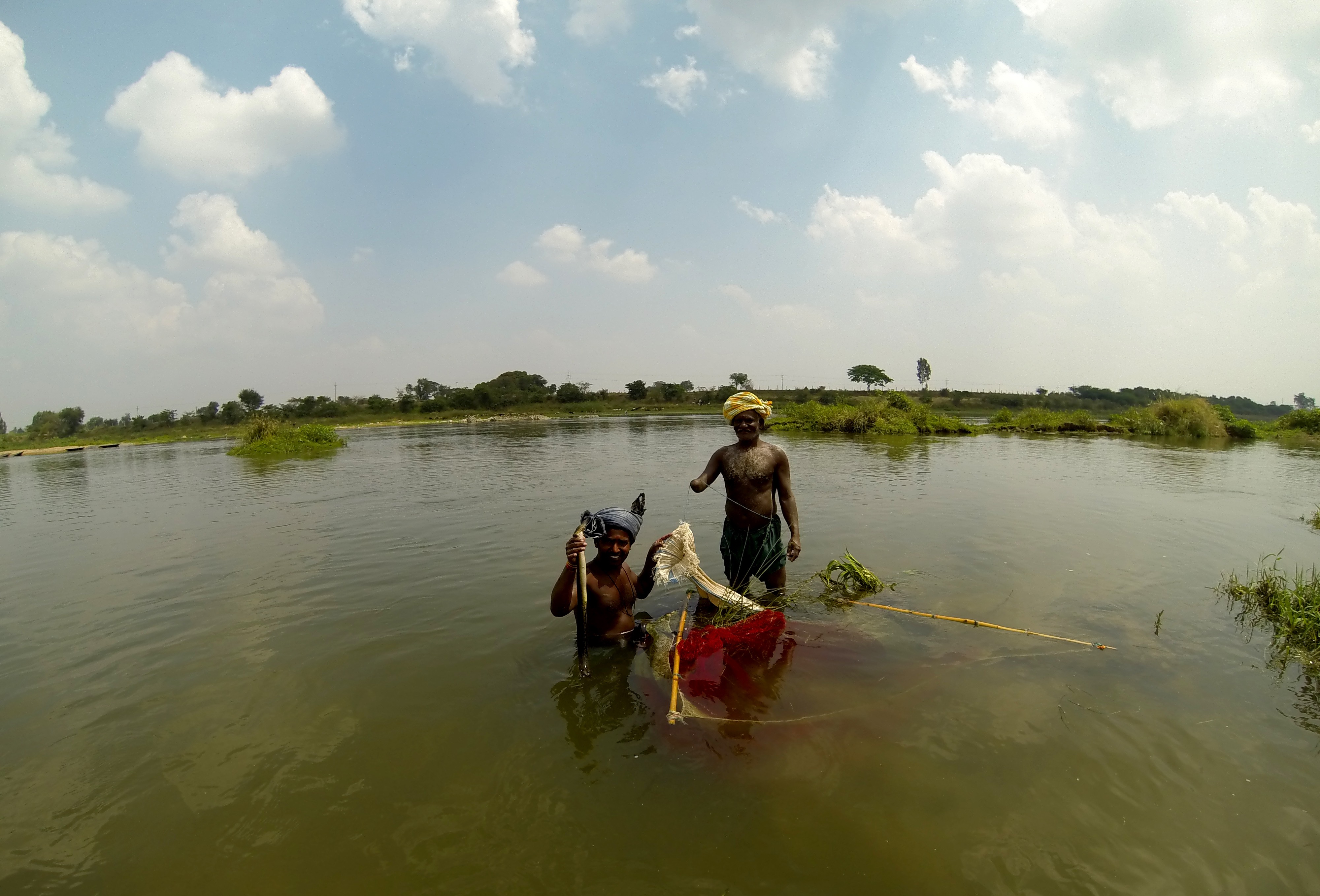
The only time wild otters mattered were when they were captured to replace the dead ones at the famous Chamarajendra Zoological Gardens. There were coverups and paperwork was fudged because this was punishable by law. Otters are protected by the Wild Life (Protection) Act. The reason for their protection under stringent laws is because otters have been extirpated in many river basins in India and across much of Asia due to the demand for their pelts. Poachers trawl unprotected rivers snaring and clubbing otters to death to have coats and headgear made of their fur, primarily for markets in China and southeast Asia.
Otters managed to persist along the Cauvery not because there were people looking out for them and government agencies protecting them – but purely by spunk, an ability to adapt and to escape the maze of fishing nets and dynamite blasts. They had no friends but the river. And the river was changing fast. The otters had a chance if they could keep up with this blistering pace and avoid poachers’ snares.
Frankly, I was dying to get out of the plains. I loathed most stretches for how populated they were and for how disfigured the river had become. I was tired of walking most places when I should have been paddling the raft or the kayak. The sun was relentless on a dried up river. I was now far from my refuge along the river in Coorg where an elephant herd swam across the river most nights. So far, in the plains, the only semblance of wildness were islands of wind-tossed reeds and rushes that were refuges for otters and other creatures.
The exposed rocks were prime real estate, too. River terns competed with Eurasian thick-knees for nesting sites. Open-billed storks and the heaps of mussels pried open by them were ubiquitous. It was common to see pelicans paddling in deeper pools of the river or circling overhead with their massive wingspan. Among the not-so-common denizens were a flock of golden plovers, a band of bar-headed geese and solitary gull-billed terns. The critically endangered black-bellied tern was not such a rare sight along certain stretches of the river. Spot-billed ducks, with their plumage of resplendent blue-green, took off low and wheeling over the river and shot overhead to a quieter spot. Darters and night herons took to the sky as we passed underneath their roost sometimes. Peafowl flew ungainly across the river, barely making it to the other bank.
I was tired, sometimes too tired, to resist the constant stream of thoughts and I gave in and enjoyed what I watched. There would be days, even weeks, without having seen an otter and then their signs would be comforting enough. They were there somewhere, hidden from prying eyes, slipping unseen in and out of the waters and playing when nobody watched.
The fishers were a disheartened lot. Like the otters, they too were stuck in changing times – between declining fish catches and exploding mining, not to mention increasing pollution and fragmentation of the river. The only outlet to vent their frustration was to blame otters for everything that was going wrong on the river. After all, they could chase them and club them, a confrontation they could not risk with sand miners and dynamiters.
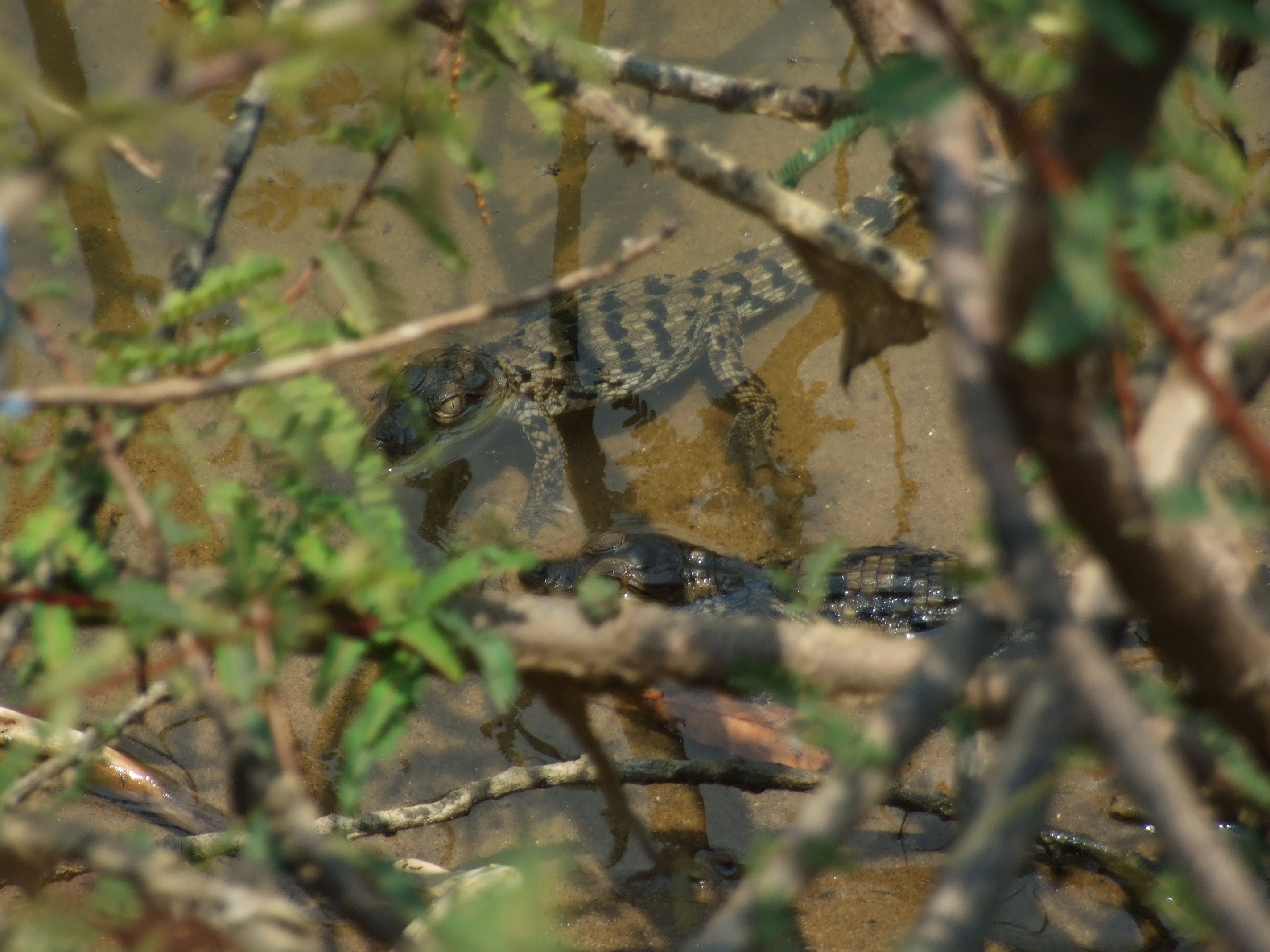
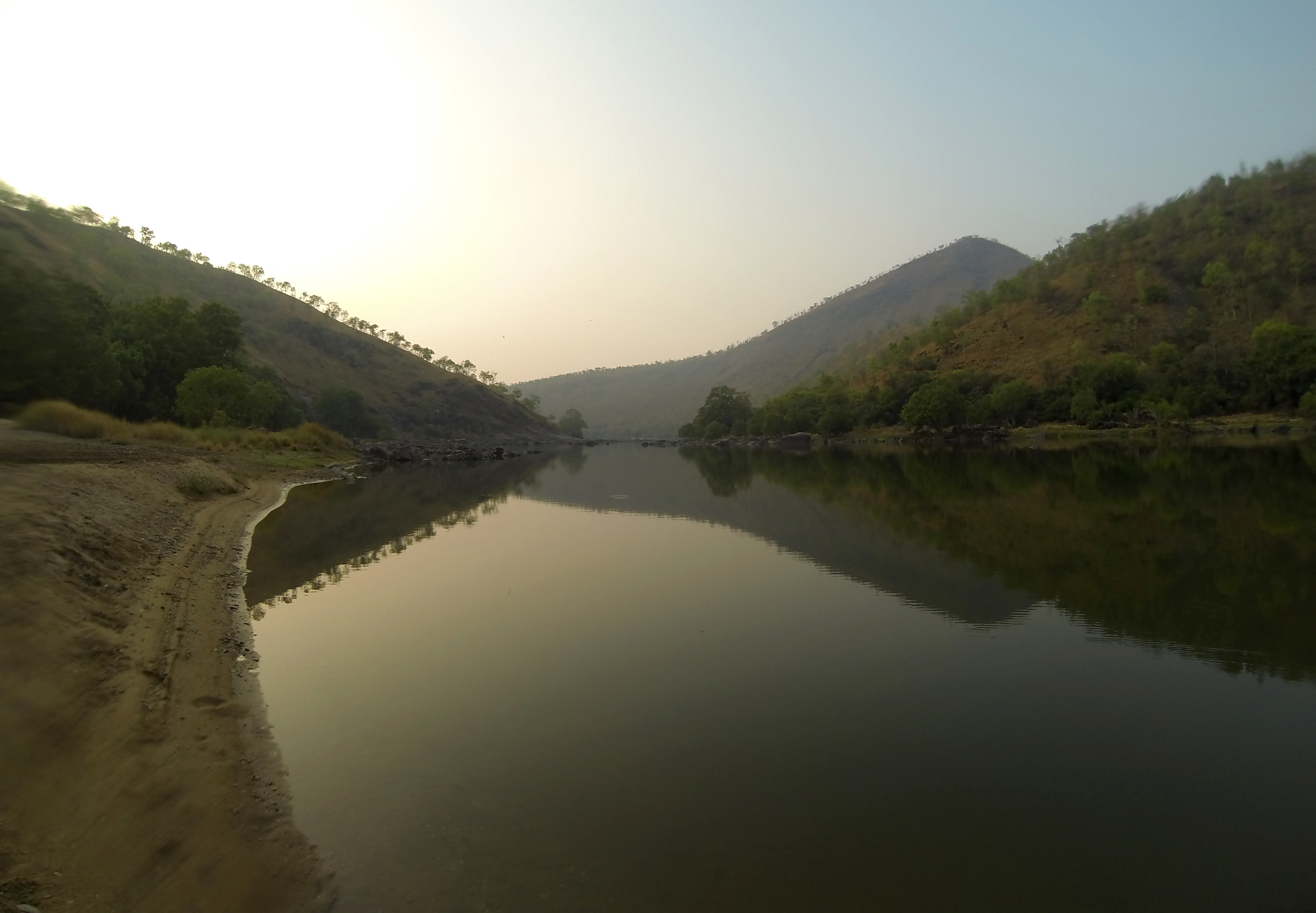
The city was also to blame. Bengaluru’s skyscrapers and flyovers extracted a heavy toll on the Cauvery, the otters and the fishers. Sand was needed for construction, and this boom in construction for roads – and the greed for second homes – glitzy towers was like a death knell for the river. Through all this, a seemingly dead river was still somehow alive.
The river finally plunged free from the shackles of the plains into the valleys of the Cauvery Wildlife Sanctuary. Here, she gurgled, roared, hissed and flowed. The change was evident. Vast expanses of forest on either side, hills, gorges, large sandbanks and a garland of native riverside trees. She flowed past some of India’s finest riparian forests, forests that are home to the endangered grizzled giant squirrel. Here, too, it seemed like the river held everything together in more ways than one.
Severely persecuted elsewhere, mugger crocodiles found a sanctuary here. They could be easily sighted basking on the banks, exposed rocks or silently patrolling the waters. The hillsides were mostly burnt and blackened, by fires lit by tourists or locals looking for fresh pasture. On the blackened hillsides, the Anjan tree (Hardwickia binata) had put forth tender green flush (new leaves) and the landscape looked like it was dotted with bright green flames lightening the sombre mood. The forest shimmered like a green vine, closely following every curve of the river on either side.
These trees, Arjuna, Hopea and jamun are evergreen, unlike the surrounding dry, deciduous landscape that shed its leaves in the summer. In this sanctuary, I spent numerous evenings watching the river flow by as the sky reddened and then turned dark as the sun slipped behind the hills. Some evenings one could watch fire devour tinder-dry hillsides sending up columns of smoke. The soft murmur of the summer river flowing over the rocks never ceased. The soft booming hoot of fish owls and feverish crescendo of hawk-cuckoos greeted the rising moon, just as the child-like cries of fish eagles had greeted the blazing mid-day sun.
Here, in the sanctuary, the raft and the kayak were not needed and couldn’t be used. I walked instead, scouring the banks for otter signs. My walks started in the morning and went on till early evening, accompanied by forest department staff. It was a long relay, from beat to beat, camp to camp and range to range. It was a simple life: with no electricity to light up the night and conversations over the campfire replacing television. Our roof most nights was the brilliant night sky where we could play endless games of connect-the-dots and never go wrong.
There was no one answer, there were many possibilities. Life along the river was simple. You just followed it downstream. Sandbanks that were a rare sight earlier were much more common now, and each had a different story to tell. We passed many recently hatched mugger nests with young hatchlings sticking close to the banks. The water-dispersed Arjuna trees stood like silent sentinels, capable of withstanding swift currents when the waters rose during the monsoon. Their roots spread out over the surface, often like white serpents, anchoring the tree firmly or in some sense defining the course of the river.
In the last stretch of the river, before the river entered neighbouring Tamil Nadu to be blocked by the mammoth Mettur Dam, we kayaked and watched a pair of otters watching us. Having reached the end of 330 km, we didn’t know how to react. There was a sense of relief at having paddled, walked and rafted the entire stretch of the Cauvery in Karnataka, but I was also staring at uncertainty now that there was no river to define the course.
The City
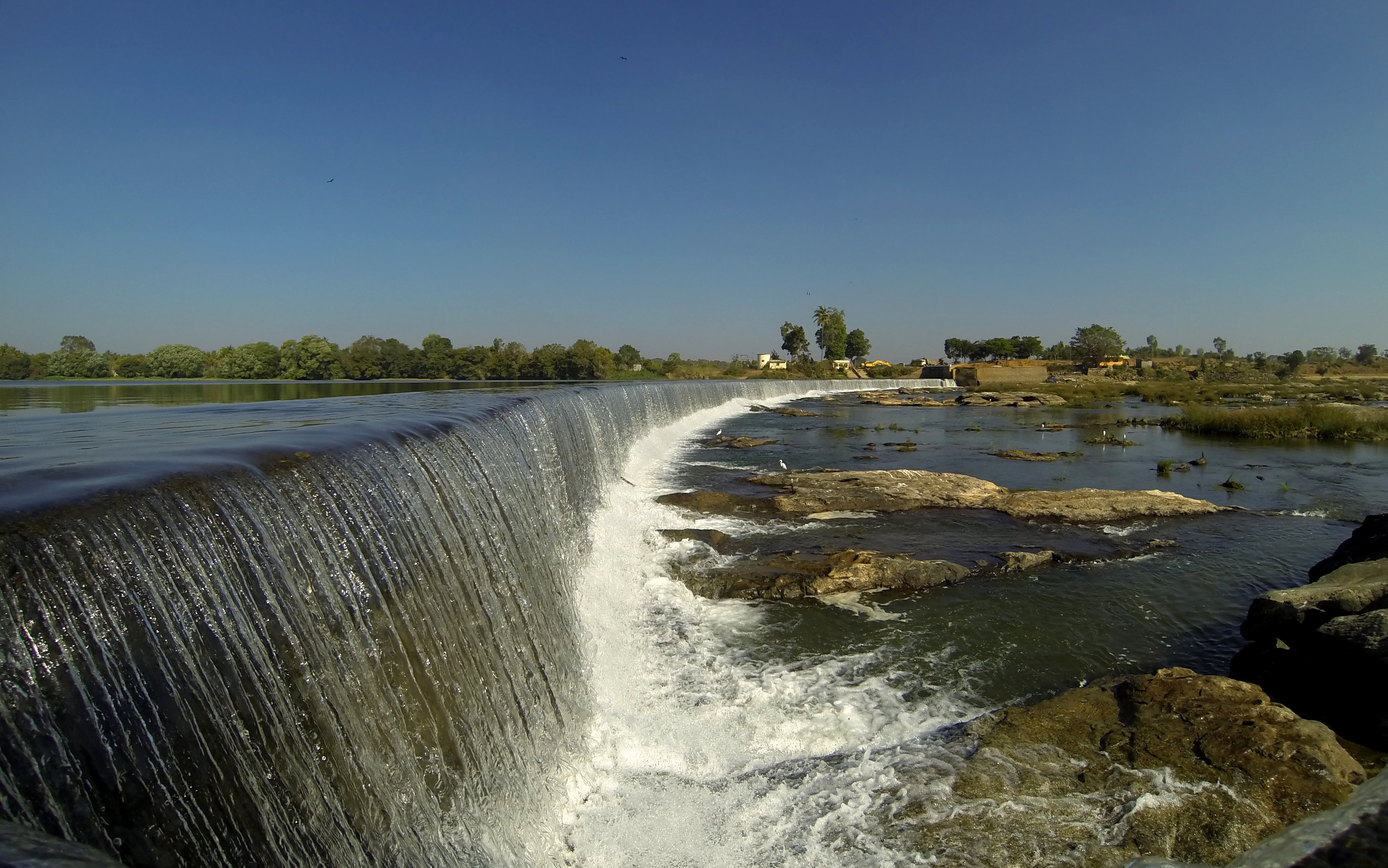
Through all this, I had somehow endured. I had been on and off medication. I had a wonderful doctor, a person who endured all my whims and fancies, missed appointments and long disappearances. I would get a mail sometimes that very often revealed his human side and not the clinical person that most people knew. He worked harder than me to find drugs that helped me. I had abused many in the past and they were not effective anymore. This was the doctor whose time I often took for granted and people wondered how we still managed to stay together as a team. Our discussions frequently veered towards literature or music from the 1970s, and maybe this was the glue during frustrating times.
I had noticed earlier that my illness subsided when I had access to the wilderness. Time spent outdoors in wild places were the only happy memories in an otherwise confused and chaotic few years. Having finished my fieldwork, I was resigned to life in the city and the worst was yet to come. I nosedived and wrestled and refused to let go. It was a free-fall that was to be arrested briefly, but resumed when close friends abandoned ship. I was afraid; and I was afraid to be vulnerable. I was to plumb the darkest depths, and others stepped in where the closest had abandoned. Those were the times when I would come closest to self-annihilation.
There was talking me out of things and talking me into better things. I knew I had plunged the deepest but life has its own ways of staying afloat. I had adopted a four-legged friend from a shelter for rescued dogs, Noah, who was as broken as I was. Having spent much of his life abused and locked in a cage, he was aggressive, insecure and did not trust people. The wild still lingered in him – but he had accepted me. He was going to be my shadow; fiercely protective and always watchful with those cool brown eyes. We are on the mend now. Tail held high, one ear cocked and the other floppy, he pulls me out every time I slip. As for him, he now trusts people and has a large community of friends. He is quite the bridge between my world and the one outside.
I still run, but I run because there’s pure exhilaration in running with a friend who will keep up, outrun and still continue to run; and placing one foot after the other takes over from everything else until it is the only thought left to play with. Without doubt he’s had the greatest influence on me, showing that life can still be beautiful with its dark days and bright sunny ones. From him, I know that being vulnerable is also being strong. There is more empathy towards myself. I have begun to accept that the dark clouds will clear and there will be sunny days as there will be gloomy ones.
Now that the healing has begun, it is hard. Sometimes, I am two different selves – one that believes in loving kindness, and the other reacting furiously. Watching emotions flow over, and to wrestle with them at the same time is overwhelming at times. I believe this is a harder state to be in. The peaks and troughs are now tempered by lithium and assorted compounds, monthly appointments, time spent with Noah and a larger community of friends.
The manic me and depressive me will be my companions whether I want them or not. There’s no running away and I might as well enjoy the views from the windows they’ve opened for me. I still make my trips to the river and wait for otters at my favourite haunts. Watching them play, hunt and raise pups in a river that I thought was beyond redemption is a way of reminding myself how little I understand these animals and the river that is their home. The otters and the river, in flesh and blood and water, are metaphors of nature’s resilience. A force, just like the human mind, that will stretch to accommodate, but not if stretched too far.
To quote Kipling’s How Fear Came,
The stream is shrunk – the pool is dry,
And we be comrades, thou and I;
With fevered jowl and dusty flank
Each jostling each along the bank
Nisarg Prakash is a wildlife biologist who has been enchanted by wild spaces for as long as he can remember. He has been studying otters since 2009. Borrowing a line from Norman Maclean, he can comfortably say he is haunted by waters.

